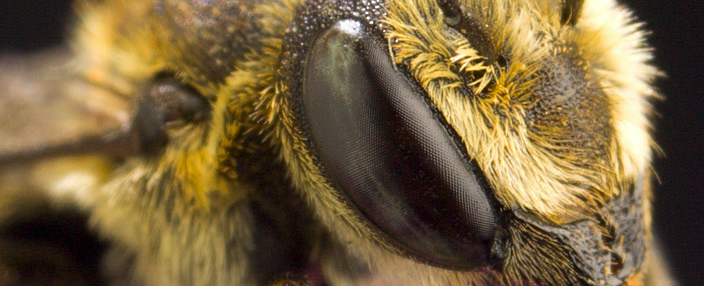
Honey bees are stocky bees with a black body (often streaked with light hairy bands on the abdomen) and a broad head. The species present in Quebec are 5 to 20 mm long. The two pairs of wings are transparent. Under the abdomen of the female is a ventral brush furnished with short hairs. The male is generally smaller than the female.
Life cycle
In spring or summer, depending on the species, the bees leave the individual cell where they have spent the winter. Usually, males come out of their cells before females. Mating takes place as soon as the females emerge.
The female beetle builds its own nest and takes care of its food supply. It can nest in various cavities or dig a nest in the ground. Nests are made up of a series of cells arranged end to end. Each cell is shaped like a thimble and is made from pieces of leaves or petals that the bee cuts using its mandibles . When a cell is completed, the megachil fill it with pollen and nectar. She then lays an egg on the food supply.
After laying eggs, the beetle closes the cell, usually with the help of pieces of leaves or petals. Once the nest is completed, the insect plugs its end. Each female can build more than one nest. The larva that comes out of the egg is white. Its cell contains enough food for its full development.
The bee larva does not produce droppings on a regular basis. She empties herself once, then wraps herself in a cocoon inside her cell. It spends the winter in this shelter, at a stage called the prepupa (last stage of development of the larva). When sunny days return, the insect metamorphoses into a nymph and then into an adult. This one lives from one to three months. Most species produce only one generation per year.
Habitat
The bees live in open environments provided with nectar-bearing plants and the materials necessary for the construction of their cells. They are found in agricultural settings, towns and villages.
What you need to know
Few insects are able to move objects while flying. A female beetle can carry hundreds of pieces of leaves or cut petals to build her nests.
When cutting a leaf or a petal, the bee grips the edge using its hind legs. Her body then acts like a compass as she circles her head. The insect cuts the shape with its mandibles as it spins on itself.
Ecological roles
These bees are important pollinators in natural, agricultural and urban environments. They serve as food for various animals.